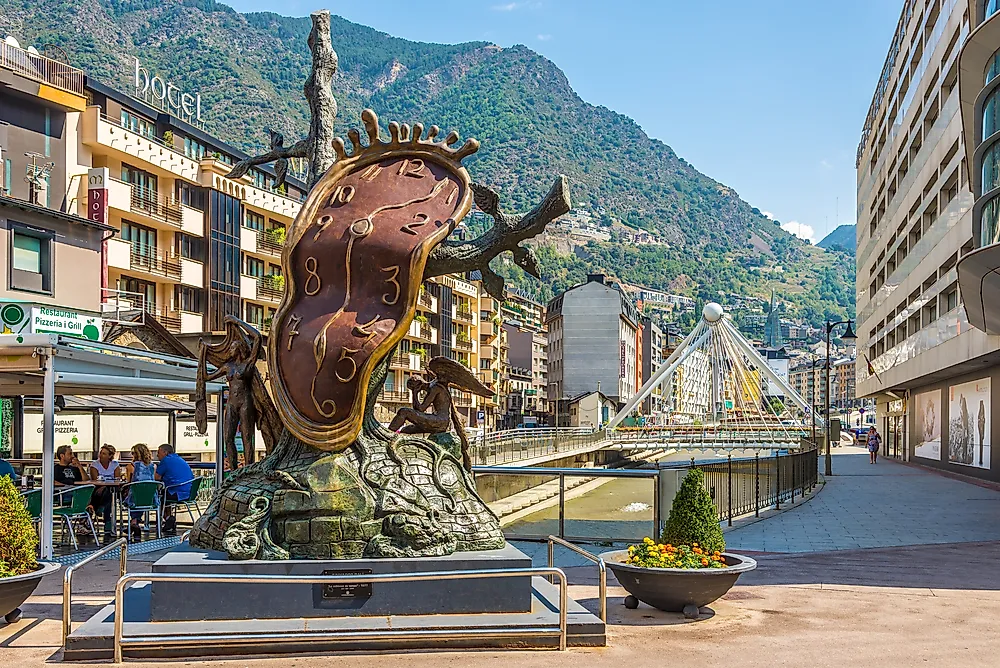The Culture and Traditions of Andorra

Andorra is a landlocked microstate that is sandwiched between France and Spain that was formed in 1278 under a charter. It covers an area of 180.55 square miles, and as of 2016, it had 77,000 inhabitants. It is regarded as a principality that is headed the bishop of Urgell from the Spanish side and the president of France. Andorra is multi-ethnic as it has inhabitants who are Spanish, Portuguese, French, Andorran and a host of other people from the surrounding nations. The official language used is Catalan.
Brief History
Andorra has its origins dating back to the Mesolithic and Neolithic periods. The Iberian people who lived in the region eventually mixed up with other people from Central Europe, giving birth to the first Andorran state. Until 1278 the Andorran state was under the rule of the bishop of Urgel. However, this changed after the signing of a charter that established two co-princes to oversee the affairs of the state, the Bishop of Urgell and the head of state of France. Present-Day Andorra is administered by of both France and Spain which is a unique situation as they have currencies of both nations, both systems of education and both systems of languages on top of the Catalan that is widely spoken by Andorrans.
Language
The Andorran people practice the Catalan culture which is the most dominant in the microstate. The Catalan culture in itself is a mix of the French, Spanish, and Portuguese cultures. The primary language spoken is Catalan which has its origins dating back to the 8th and 10th centuries where it evolved from Latin during the Roman rule of the Iberian Peninsula. After the Romans, the area was conquered by people of Germanic descent who brought their influence on the existing language which evolved into a unique dialect.
Cuisine
The Catalan cuisine is heavily influenced by seafood and fresh agricultural produce, both from the two activities that Catalans are considered masters in, fishing and farming. Some of the most famous foods served by Catalans include the Pa-amb tomaquet which is bread with tomato, olive oil, and some salt, and the dish is eaten much the same way as tapas. There is also the Calcots which belong to the onion family and is cooked by barbecuing them or slowly cooking them in the oven. Once done one simply peels and dips them into Romesco sauce. There is also the Botifarra which is a sausage that goes hand in hand with pa-amb tomaquet. There is the special Catalan stew called Escudella which is a mixture of beans, potatoes, meat, and cabbages. It is a dish that is eaten during winter. There is also the Fideua which is made by cooking noodles with squid ink to give the dish a very dark color and a delicious taste. The Mel I Mato is a creamy cheese that is usually served with honey.
Festivals and Celebrations
The Andorran people religiously observe all the Catalan festivals like their brothers from other regions. Some of the festivals that are celebrated every year include Le Merce which is observed in September and takes a whole week. It used to be a day set aside for the veneration of the Virgin of Grace, but it has evolved to include other Catalan traditions like wine fairs, music performances among a host of other activities. There is the Our Lady of Meritxell Day which commemorates the country’s patron saint, and it has been held on the 8th of September since its inaugural debut in 1873. There is also the Revetlla de Sant Joan which celebrates the night of Saint Joan during the summer months, and the festival is characterized by huge bonfires in village squares and people swinging fireballs around dressed up as witches and devils. There is also the Pasqua festival which is the Catalan version of Easter. It is observed through the attending of masses and the eating of the traditional Easter cake which is made using sweet bread, candied fruit, and boiled eggs.
Religion
Christianity is the dominant religion among Andorrans. Christian Catholics make up about 89% of the country’s population. The second religion is Islam which makes up about 0.8% of the population, and other notable religions include Judaism, Buddhism, Hinduism, and others. The Andorran constitution allows for freedom of worship and encourages religious tolerance to promote peaceful coexistence among the people.
Literature and Art
Being a small country nestled in a mountainous location and surrounded by big nations, the Andorran literature has for long struggled to gain prominence due to the huge influence of foreign literature and a small population that cannot adequately sustain it. Despite this, however, Andorra has produced good writers of high reputation such as Michele Gazier and Ramon Villero, who have left an indelible mark on the Andorran literature and the outside world. Its seclusion and remoteness have made Andorra become the perfect place for literature to thrive. Andorran art, on the other hand, has fared relatively better than literature because it borrows heavily from the Romanesque style which is already known to the world. Most of the architectural designs have rounded arches much similar to the buildings that are associated with the ancient Roman Empire. The same style extends to painting and sculpturing as characterized by the ornamentation in churches. Andorran music includes traditional dances like the contrapas and marratxa. The music and dances borrow heavily from the neighboring countries of France and the Catalan regions of Spain.











